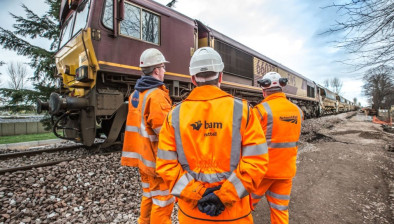Feature: The design changes saving carbon emissions on the Cross Tay Link Road project
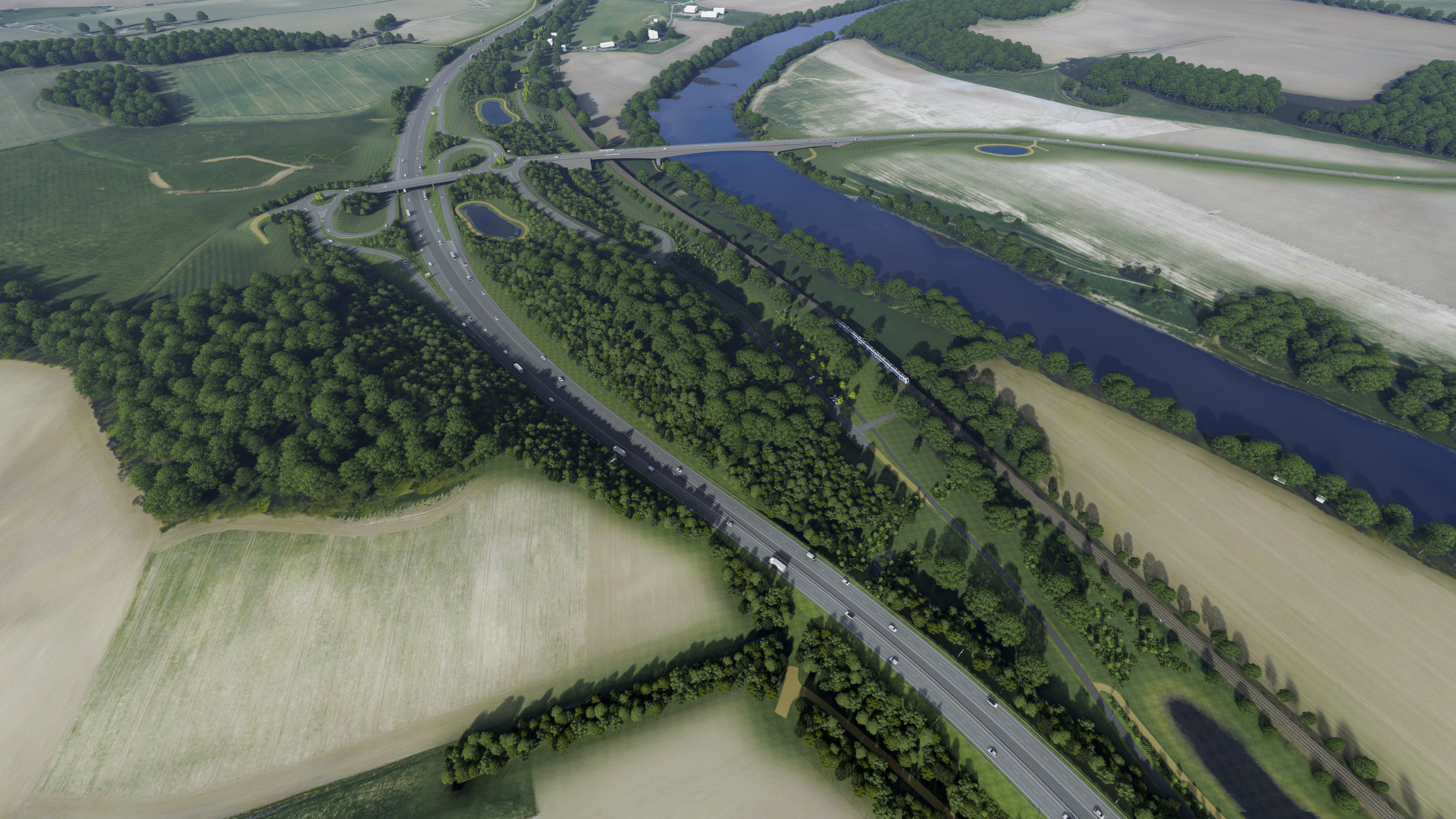
Artist's impression of the bridge and the road's connection to the A9
The Cross Tay Link Road (CTLR) is the largest infrastructure project Perth and Kinross Council has ever undertaken. Scottish Construction Now editor Kieran Findlay visited the project to find out how detailed design development and changes to construction methodologies have helped BAM Nuttall reduce carbon output on the project by over 35,000 tonnes.
About this development:
- Authority:Perth and Kinross
- Type:Other
- Applications:
- Team:BAM Nuttall (main contractor), Sweco (lead consultant)
Appointed to deliver detailed design and advance work for the project last year, BAM was contracted to reduce carbon by 30% of the baseline from the original design by client Perth & Kinross Council but has managed to exceed this target by almost 35%. Further carbon reductions are expected to be realised during the construction phase of the project.
According to calculations based on statistics from the Department of Transport, the carbon savings made so far on the CTLR are the equivalent of taking more than 20,000 small cars off the road for a year.
The project involves the construction of a new three-span bridge over the River Tay and six kilometres of new road linking the A9 and the A93 to Blairgowrie and the A94 north of Scone. It also includes the realignment of two kilometres of dual carriageway on the A9 just north of Inveralmond Roundabout.
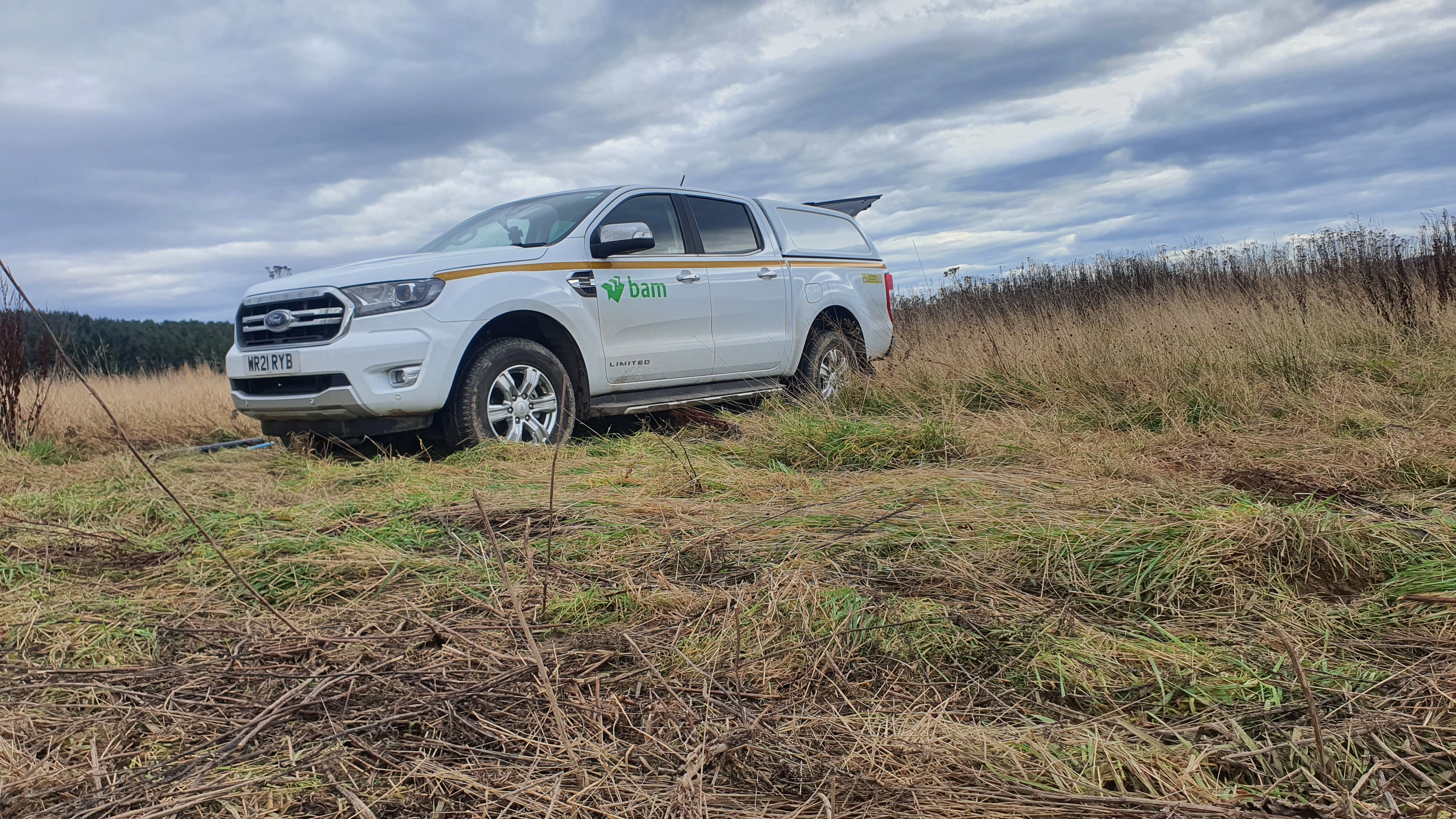
BAM was appointed to the project last year
Outlining the main reasons for the project, Perth & Kinross Council’s roads infrastructure manager Jillian Ferguson said the new road will significantly reduce traffic congestion and related pollution in Perth city centre while opening up new active travel opportunities and will give access to areas around the city for sustainable development.
“The reasons for the decision to go ahead with the project were probably two-fold,” she explained. “One of the main things is that Perth city centre is designated as an air quality management area. The main streets Atholl Street and Bridgend, then the A93 on the other side of the bridge going up to Scone, are the two key areas where there’s congestion. The combination of the tunnel effect created by the buildings and idling cars causes significant pollution and the obvious health issues associated with that.”
Jillian, who also acts as client manager on the CTLR, added: “Going through the four phases of this project will effectively provide an alternative for cars rather than going through Perth city centre which then enables that space to be freed up for more sustainable travel, which will include buses cycling facilities and possibly electric vehicle charging points in the future.
“So that’s the principal driver behind it. And then, in terms of the Local Development Plan, that opens up land for development and that’s where the economic side of it comes in.”
Once completed, the CTLR will facilitate new investment of £174 million in new commercial space with the potential to create 5,359 new jobs. Overall, the project will create an extra £283m net additional economic output for the area.
It is also hoped that removing traffic congestion from the city centre will encourage more visitors to spend time and money in the city, not to mention the significant opportunities for local employment and supply chain benefits presented during project delivery. By 2035, the project will have opened up land suitable for more than 9,200 new homes.
Carbon reduction
To help keep carbon emissions to a minimum, the project has been carefully designed to recycle every tonne of earth that needs to be moved during construction. Earth materials from excavations are moved to form other features, for example, road embankments needed in the overall design. By keeping all earthworks movements within the site boundary, the contractor has significantly reduced construction traffic being added to the local road network.
This, along with changes to road pavements, footways/cycleways and road drainage by using more sustainable solutions and the use of lower carbon materials along with design changes to the bridge structures all helped BAM surpass its carbon reduction targets.
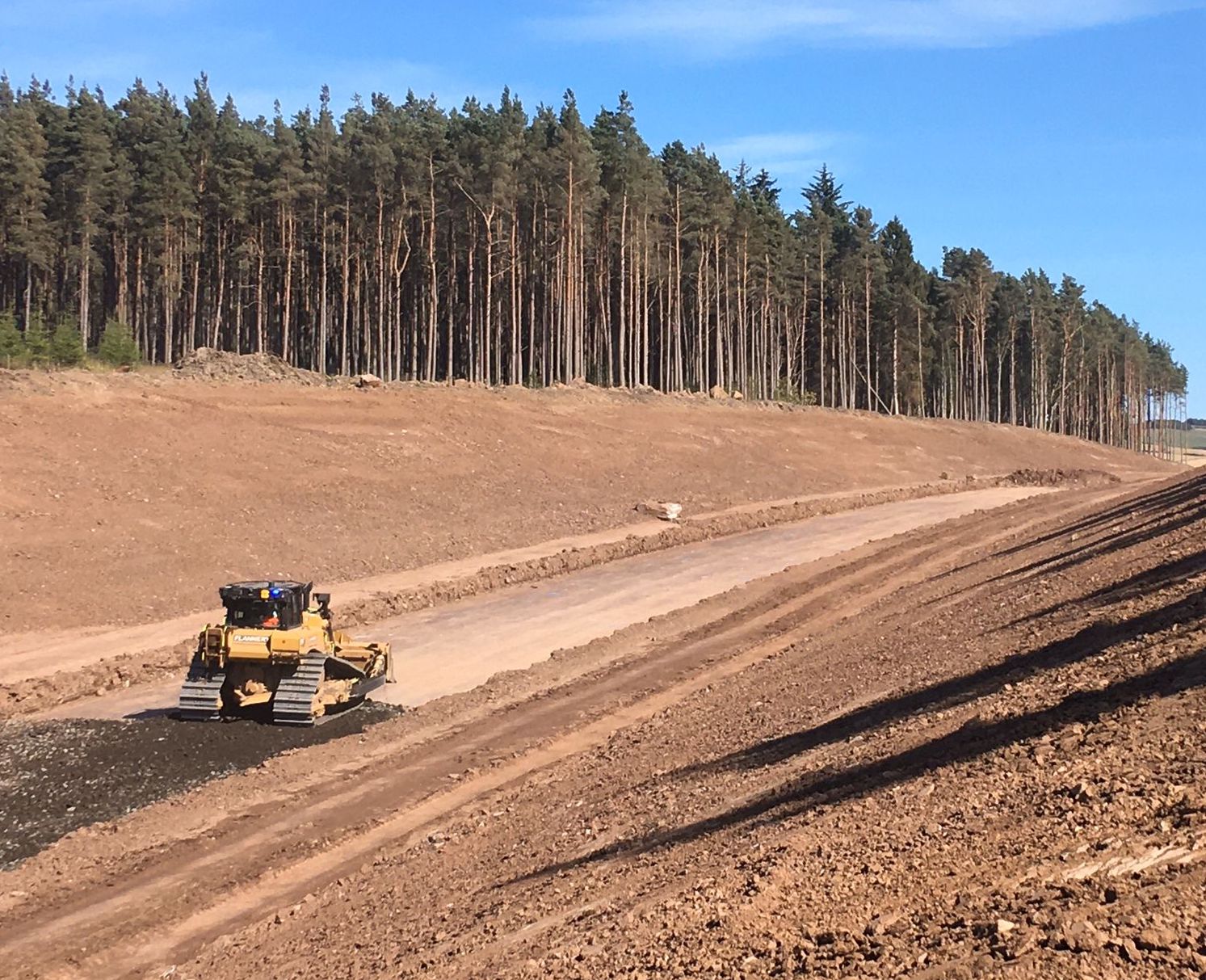
Box cutting at Highfield
“There is no way to undertake the construction of a complex major infrastructure project such as the Cross Tay Link Road without having significant carbon outputs, however with careful design and project management combined with smart project delivery we can make considerable carbon reductions,” said BAM Nuttall project director William Diver.
“Simple steps like using modern plant with low fuel consumption, GPS enabled plant and sustainable material selection and sourcing locally all contributed towards the lowering of the carbon footprint of the project. This is just the start of the construction phase, so we will be refining and improving the way we work to deliver even more carbon reductions as the project develops.”
The project manager for BAM Nutall, Derek Walsh, provided more detail: “One good example of how we’ve worked hard to reduce carbon on the project is the change from pipes to swales, which is a more efficient system with less maintenance in the future as well. Aggregates are another area as we’ve done our best to source aggregates as locally as possible to the project. Engaging Tayside Contracts to supply materials for the scheme has given us success there too.
“On the structures side of things, in collaboration with our clients, we’ve tried to reduce spans and widths where we can to minimise concrete consumption. On the bridge itself, we haven’t compromised on the widths to take into consideration pedestrians and cyclists but in terms of the cross-section of the bridge, we have been successful in reducing carbon content.”
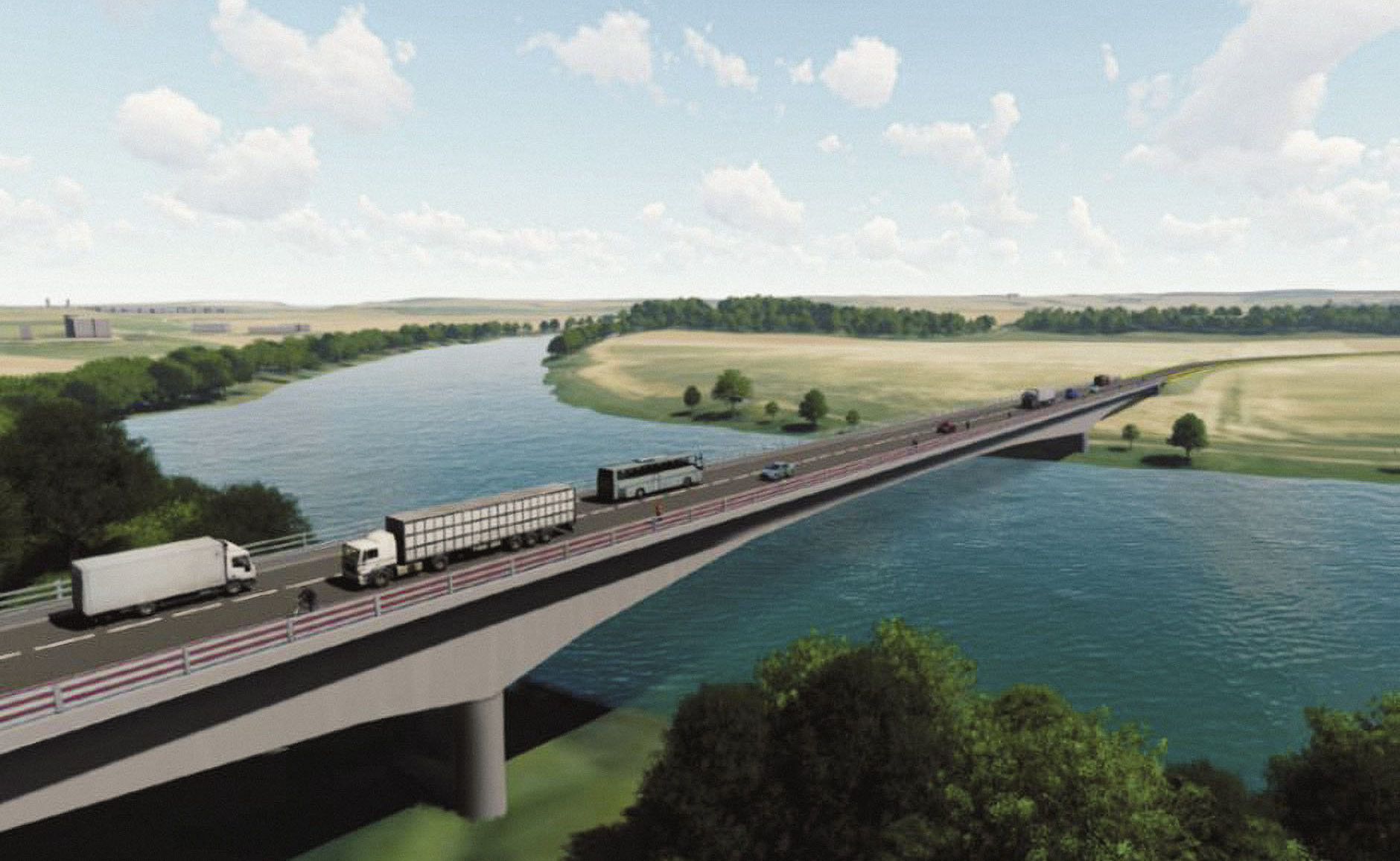
The project’s approach to carbon saving is being used as best practice by the Scottish Government, largely because the emphasis on carbon reduction throughout the design and construction process was embedded into the project at the earliest stage. Sweco was appointed as the lead consultant back in 2017 and brought the development to the specimen design stage, considering ways to make it more sustainable and reduce carbon through design at the outset.
“Reducing carbon output is a key deliverable for the project when it is complete as it will act as an enabler to help shift traffic out of the city centre and promote active travel options. We are pleased with the progress BAM is making in putting carbon reduction as a central theme during the detailed design and construction phase of the project,” said Jillian Ferguson.
“In its detailed design, BAM then had to meet the targets we set in the contract because we put so much emphasis on this in the tender. We looked at value engineering when BAM was appointed but carbon came into it then as well. We weren’t content with just reducing costs.”
Community benefits
As they do for all large projects, community benefits have played an integral role in the CTLR. Some projects lined up to benefit from assistance include the local Men’s Shed, bird boxes, walking trails and mental health initiatives. Where Perth & Kinross Council has perhaps differed from other clients is in setting up community groups, one for the east of the project and another for the west, to offer diverse and wide-ranging input into what projects would most benefit their respective communities.
Jillian said: “In our contract, we had a lot of project-specific community benefits outlined such as biodiversity, community involvement and education. We had a cultural aspect running throughout it as well with art projects lined up.
“Our community groups had to be representative of the community, not just include the community councils. We limited it to one member from each organisation and so that one group, for example, includes representatives from the football team, the school, the tennis club and the scouts. But equally individual members of the public were invited to join as well. The groups were then asked to pitch what they wanted to see in the community that could improve it.
A souterrain in place on site
“We’ve collected all that information and those projects have each been allocated to engineers who are looking at feasibility and draft designs before we go back to the community groups.”
She added: “We’ve also been in touch with Perth prison about the potential for including ex-offenders in the programme so they could do some work, but also it’s more about training and providing them will other skills which opens up routes they could go down once they come out of prison.”
The Cross Tay Link Road is due to open in early 2025.






















